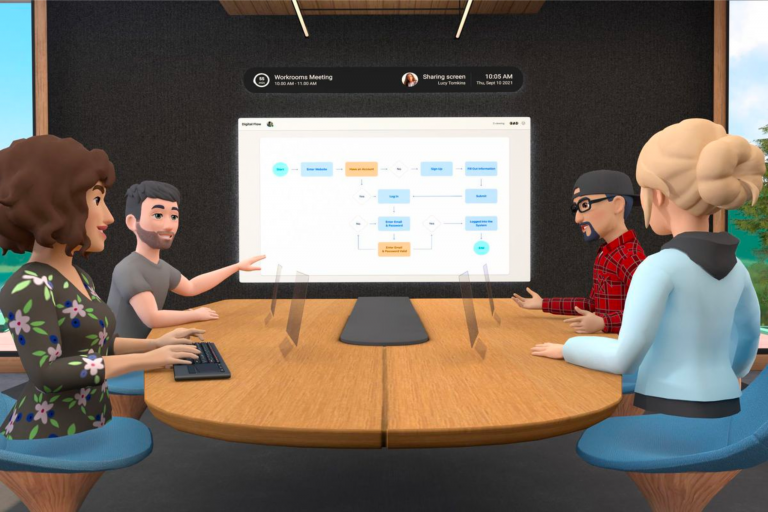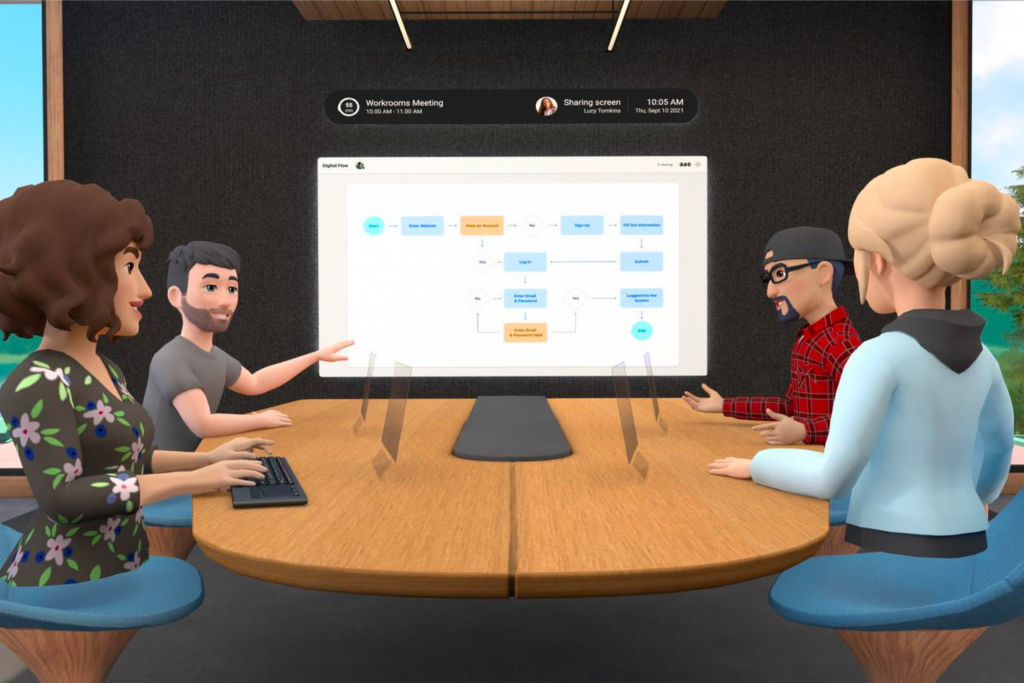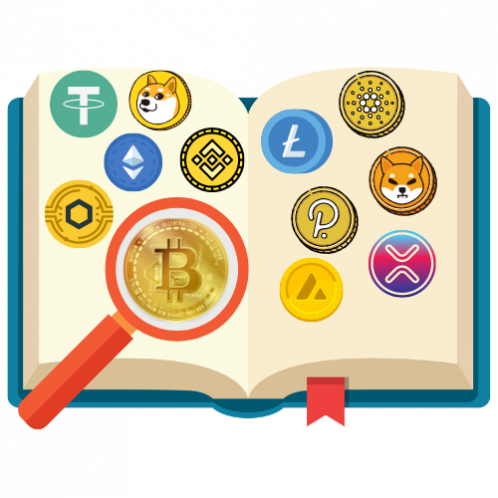Introduction
Virtual reality (VR), augmented reality (AR), and the metaverse are some of the most exciting technological advancements of the modern era. These three concepts have been in the spotlight for many years, but despite their similarities, they are distinct from one another. This article aims to provide an objective overview of the differences between virtual reality, augmented reality, and the metaverse, and how they could impact our daily lives in the future.
Virtual Reality
Virtual reality refers to a computer-generated environment that simulates a real-world experience. VR is experienced through a headset that covers the user’s eyes and ears and provides an immersive, three-dimensional environment. The headset tracks the user’s movements, allowing them to interact with the virtual world in real-time.
VR is often used for entertainment purposes, such as video games and movies, but it has also been utilized in various other industries, such as education, healthcare, and military training. For example, medical students can use VR simulations to practice surgeries, while soldiers can use VR training to prepare for combat scenarios.

Introduction

Virtual reality (VR), augmented reality (AR), and the metaverse are some of the most exciting technological advancements of the modern era. These three concepts have been in the spotlight for many years, but despite their similarities, they are distinct from one another. This article aims to provide an objective overview of the differences between virtual reality, augmented reality, and the metaverse, and how they could impact our daily lives in the future.
Virtual Reality
Virtual reality refers to a computer-generated environment that simulates a real-world experience. VR is experienced through a headset that covers the user’s eyes and ears and provides an immersive, three-dimensional environment. The headset tracks the user’s movements, allowing them to interact with the virtual world in real-time.
VR is often used for entertainment purposes, such as video games and movies, but it has also been utilized in various other industries, such as education, healthcare, and military training. For example, medical students can use VR simulations to practice surgeries, while soldiers can use VR training to prepare for combat scenarios.
Augmented Reality
Augmented reality is similar to virtual reality in that it also involves computer-generated environments, but it differs in that it superimposes digital content onto the real world. This allows users to see virtual objects in the real world, as if they were actually there. AR is experienced through a smartphone or tablet camera, which captures the real world and then displays virtual objects on the screen.
Like VR, AR has also been used in various industries, such as gaming, marketing, and education. For example, AR games like Pokemon Go allow players to catch virtual creatures in real-world locations, while AR marketing campaigns allow brands to showcase products in innovative ways. AR has also been used in education, allowing students to experience virtual simulations of historical events or scientific concepts in real-world locations.
The Metaverse
The metaverse is a term that refers to a virtual world that exists parallel to the real world. It is a collective virtual shared space, created by the convergence of virtually enhanced physical reality and physically persistent virtual reality, including the sum of all virtual worlds, augmented reality, and the internet.
The metaverse is often portrayed as a future where people can interact with each other and digital content in a virtual world that is just as real as the physical world. This virtual world could be used for a variety of purposes, including gaming, socializing, shopping, and entertainment.
The Future of Virtual Reality, Augmented Reality, and the Metaverse
Virtual Reality in Daily Life
Virtual reality has already had an impact on various industries, and it is likely that its use will continue to expand in the future. VR could potentially be used for tasks such as remote work, teleconferencing, and virtual travel.
For example, virtual reality could be used to create virtual office environments, allowing employees to work together in a virtual space as if they were in the same physical location. This could greatly reduce the need for business travel and allow people to work from anywhere in the world.
Teleconferencing is another area where virtual reality could have a significant impact. VR could be used to create virtual meeting rooms, where people can participate in meetings as if they were physically present. This would allow people to participate in meetings regardless of their physical location, reducing the need for travel and saving time and resources.
Finally, virtual reality could be used to create virtual travel experiences, allowing people to explore different parts of the world without leaving their homes. For example, a person could visit a virtual version of Paris and experience the sights, sounds, and even the smells of the city, as if they were actually there. This could greatly increase accessibility for people who are unable to travel, such as those with disabilities, and could also provide a more affordable and eco-friendly alternative to traditional travel.

Augmented Reality in Daily Life
Augmented reality is already having an impact on various industries and its use will likely continue to expand in the future. AR could be used for tasks such as navigation, education, and shopping.
For example, AR could be used to provide navigation assistance in real-time. Instead of looking at a map on a screen, users could use AR to display directions directly in their field of view, allowing them to easily navigate to their destination. This could greatly improve the user experience and make it easier for people to find their way.
AR could also be used in education to create interactive learning experiences. For example, students could use AR to learn about historical events by experiencing virtual simulations of these events in real-world locations. This could greatly enhance the learning experience and make it more engaging and memorable.
Augmented Reality in Daily Life
Augmented reality is already having an impact on various industries and its use will likely continue to expand in the future. AR could be used for tasks such as navigation, education, and shopping.
For example, AR could be used to provide navigation assistance in real-time. Instead of looking at a map on a screen, users could use AR to display directions directly in their field of view, allowing them to easily navigate to their destination. This could greatly improve the user experience and make it easier for people to find their way.
AR could also be used in education to create interactive learning experiences. For example, students could use AR to learn about historical events by experiencing virtual simulations of these events in real-world locations. This could greatly enhance the learning experience and make it more engaging and memorable.
Finally, AR could be used to enhance the shopping experience. For example, shoppers could use AR to try on clothes virtually, see how furniture would look in their homes, or view products in 3D before making a purchase. This could greatly improve the shopping experience and make it easier for people to make informed decisions.
The Metaverse and Daily Life
The metaverse is still largely a concept at this point, but its potential impact on daily life is vast. The metaverse could be used for tasks such as socializing, entertainment, and commerce.
For example, the metaverse could be used as a virtual social platform, allowing people to interact with each other and participate in activities in a virtual world. This could greatly enhance the social experience and provide new opportunities for people to connect with each other, regardless of their physical location.
The metaverse could also be used as a virtual entertainment platform, providing new and innovative experiences for users. For example, people could attend virtual concerts, watch virtual movies, or play virtual games. This could greatly enhance the entertainment experience and provide new opportunities for people to be entertained.
Finally, the metaverse could be used as a virtual commerce platform, allowing people to shop, trade, and conduct business in a virtual world. This could greatly enhance the commerce experience and provide new opportunities for people to engage in commerce, regardless of their physical location.
Conclusion
Virtual reality, augmented reality, and the metaverse are all distinct concepts that are rapidly changing the way we interact with technology. VR and AR are already having an impact on various industries, and the metaverse has the potential to greatly impact daily life in the future. The potential applications of these technologies are vast and their impact on our lives will likely be significant. As technology continues to evolve, it will be interesting to see how VR, AR, and the metaverse will shape our future.


